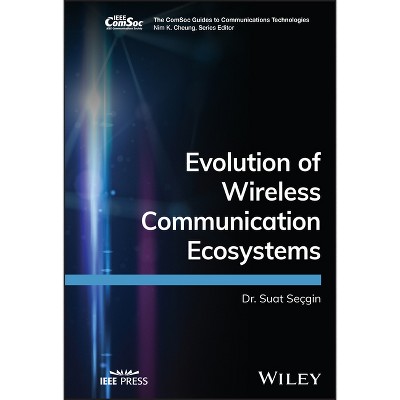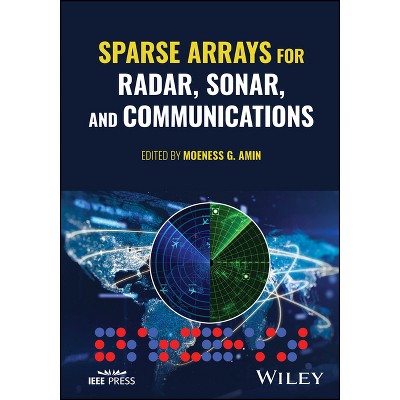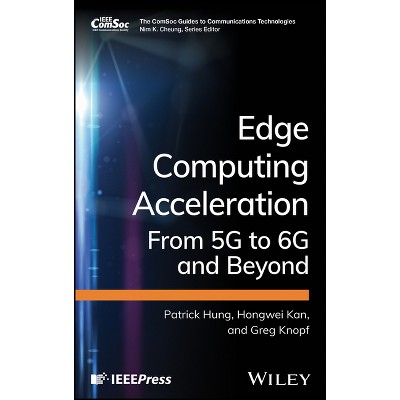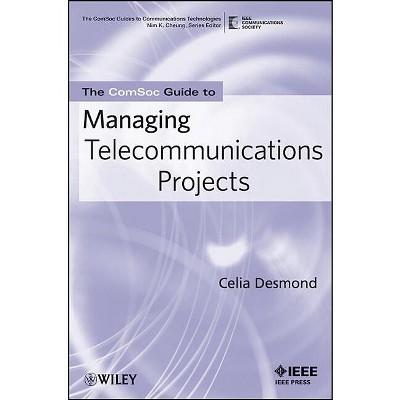Deep Reinforcement Learning for Wireless Communications and Networking - (Hardcover)

About this item
Highlights
- Deep Reinforcement Learning for Wireless Communications and Networking Comprehensive guide to Deep Reinforcement Learning (DRL) as applied to wireless communication systems Deep Reinforcement Learning for Wireless Communications and Networking presents an overview of the development of DRL while providing fundamental knowledge about theories, formulation, design, learning models, algorithms and implementation of DRL together with a particular case study to practice.
- About the Author: Dinh Thai Hoang, Ph.D., is a faculty member at the University of Technology Sydney, Australia.
- 288 Pages
- Technology, Mobile & Wireless Communications
Description
About the Book
"This book provides fundamental background on Deep Reinforcement Learning (DRL) and then studies recent advances in DRL to address practical challenges in wireless communications and networking. In particular, this book first gives a tutorial of DRL from basic concepts to advanced modelling techniques to motivate and provide fundamental knowledge for the readers. The authors then provide case studies together with implementation details to help readers better understand how to practice and apply DRL to their problems. After that, they review DRL approaches that address emerging issues in communications and networking. Finally, the authors highlight important challenges, open issues, and future research directions of applying DRL in wireless networks."--Book Synopsis
Deep Reinforcement Learning for Wireless Communications and NetworkingComprehensive guide to Deep Reinforcement Learning (DRL) as applied to wireless communication systems
Deep Reinforcement Learning for Wireless Communications and Networking presents an overview of the development of DRL while providing fundamental knowledge about theories, formulation, design, learning models, algorithms and implementation of DRL together with a particular case study to practice. The book also covers diverse applications of DRL to address various problems in wireless networks, such as caching, offloading, resource sharing, and security. The authors discuss open issues by introducing some advanced DRL approaches to address emerging issues in wireless communications and networking.
Covering new advanced models of DRL, e.g., deep dueling architecture and generative adversarial networks, as well as emerging problems considered in wireless networks, e.g., ambient backscatter communication, intelligent reflecting surfaces and edge intelligence, this is the first comprehensive book studying applications of DRL for wireless networks that presents the state-of-the-art research in architecture, protocol, and application design.
Deep Reinforcement Learning for Wireless Communications and Networking covers specific topics such as:
- Deep reinforcement learning models, covering deep learning, deep reinforcement learning, and models of deep reinforcement learning
- Physical layer applications covering signal detection, decoding, and beamforming, power and rate control, and physical-layer security
- Medium access control (MAC) layer applications, covering resource allocation, channel access, and user/cell association
- Network layer applications, covering traffic routing, network classification, and network slicing
With comprehensive coverage of an exciting and noteworthy new technology, Deep Reinforcement Learning for Wireless Communications and Networking is an essential learning resource for researchers and communications engineers, along with developers and entrepreneurs in autonomous systems, who wish to harness this technology in practical applications.
From the Back Cover
Comprehensive guide to Deep Reinforcement Learning (DRL) as applied to wireless communication systems
Deep Reinforcement Learning for Wireless Communications and Networking presents an overview of the development of DRL while providing fundamental knowledge about theories, formulation, design, learning models, algorithms and implementation of DRL together with a particular case study to practice. The book also covers diverse applications of DRL to address various problems in wireless networks, such as caching, offloading, resource sharing, and security. The authors discuss open issues by introducing some advanced DRL approaches to address emerging issues in wireless communications and networking.
Covering new advanced models of DRL, e.g., deep dueling architecture and generative adversarial networks, as well as emerging problems considered in wireless networks, e.g., ambient backscatter communication, intelligent reflecting surfaces and edge intelligence, this is the first comprehensive book studying applications of DRL for wireless networks that presents the state-of-the-art research in architecture, protocol, and application design.
Deep Reinforcement Learning for Wireless Communications and Networking covers specific topics such as:
- Deep reinforcement learning models, covering deep learning, deep reinforcement learning, and models of deep reinforcement learning
- Physical layer applications covering signal detection, decoding, and beamforming, power and rate control, and physical-layer security
- Medium access control (MAC) layer applications, covering resource allocation, channel access, and user/cell association
- Network layer applications, covering traffic routing, network classification, and network slicing
With comprehensive coverage of an exciting and noteworthy new technology, Deep Reinforcement Learning for Wireless Communications and Networking is an essential learning resource for researchers and communications engineers, along with developers and entrepreneurs in autonomous systems, who wish to harness this technology in practical applications.
About the Author
Dinh Thai Hoang, Ph.D., is a faculty member at the University of Technology Sydney, Australia. He is also an Associate Editor of IEEE Communications Surveys & Tutorials and an Editor of IEEE Transactions on Wireless Communications, IEEE Transactions on Cognitive Communications and Networking, and IEEE Transactions on Vehicular Technology.
Nguyen Van Huynh, Ph.D., obtained his Ph.D. from the University of Technology Sydney in 2022. He is currently a Research Associate in the Department of Electrical and Electronic Engineering, Imperial College London, UK.
Diep N. Nguyen, Ph.D., is Director of Agile Communications and Computing Group and a member of the Faculty of Engineering and Information Technology at the University of Technology Sydney, Australia.
Ekram Hossain, Ph.D., is a Professor in the Department of Electrical and Computer Engineering at the University of Manitoba, Canada, and a Fellow of the IEEE. He co-authored the Wiley title Radio Resource Management in Multi-Tier Cellular Wireless Networks (2013).
Dusit Niyato, Ph.D., is a Professor in the School of Computer Science and Engineering at Nanyang Technological University, Singapore. He co-authored the Wiley title Radio Resource Management in Multi-Tier Cellular Wireless Networks (2013).











